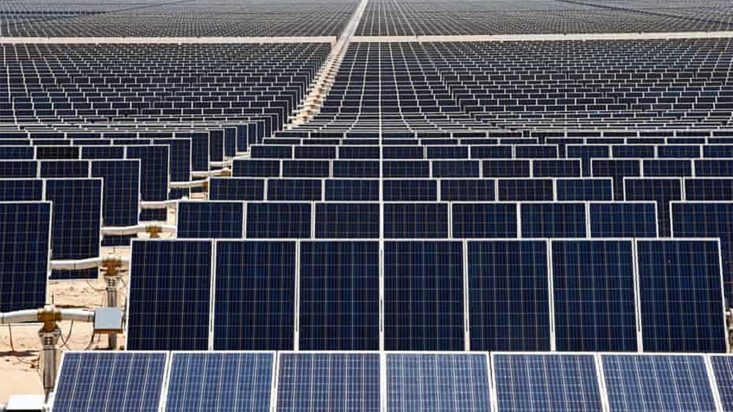Spotting an authentic sustainable investment product
In recent years there has been a large increase in the number of ESG-related investment products on the market, fuelled by increasing demand from consumers who are more aware of where they are investing their money.
According to the Responsible Investment Association of Australia (RIAA), about 60% of Australia’s $3 billion-plus investment management market is now self-declared as practising ‘responsible’ investment[1].
While ESG funds were once criticised as under-performers, there is now clear evidence that responsible investments can not only keep pace with their peers but can outperform. Typically, companies performing well on ESG will be better managers of risk, experience fewer ESG controversies, have a stronger “social licence to operate,” higher employee engagement, lower employee turnover and less regulatory attention.
The case for ESG investment is compelling, but with the vast array of products now available on the market, investors should seek out an authentic ESG fund and avoid those funds which are “greenwashing,” the term when a fund is labelled as an ESG product, however its underlying holdings are not what a typical ESG investor would expect.
With the rise in popularity of ESG investing, some fund managers have sought to capture the increased flows by describing funds as an ESG or “sustainable” product without wanting to stray too far from the stocks in their more traditional fund.
So, what should investors consider when assessing an ESG product?
Here is a checklist of issues to consider:
- Exclusionary or “negative” screens: Does the fund use negative screens and, if so, are the revenue thresholds that are used authentic? An exclusionary screen or negative screen is when a fund will exclude a company from its investment universe based on its exposure to a sector or industry that has ESG-related risks. Examples of commonly excluded sectors are fossil fuels, gambling, adult entertainment, and alcohol. Exposure is typically measured based on revenue; however, the level of tolerance can differ between product offerings. For example, a fund may exclude a company which derives greater than 10% of its revenue from fossil fuels. Investors should beware of products which exclude controversial sectors yet have high-percentage revenue tolerances.
- Positive or thematic screens: Does the fund target investment in certain industries through positive or thematic screens? As the name suggests, a positive screen seeks companies from an investible universe which have desirable ESG qualities. Positive screens can be implemented through a revenue threshold or a score-based system. A revenue threshold is where a fund will invest in a company that derives a certain percentage of its revenue from a sector which has desirable ESG qualities, such as water, waste management or social outcomes. Again, an investor should be aware of the relative degree of the percentage. A score-based system involves an internal or third-party assigning a score to a company for its ESG performance. A fund may seek to invest in companies that have a high score relative to their sector average or may select companies with a score over a minimum hurdle. Investors should check that the performance metrics scored upon are sufficiently detailed and align with their beliefs.
- Transparency: Does the fund publish a full list of the investments in the fund? Best-practice is to publish a full list of holdings, typically on a lagged basis rather than just publishing the top five or ten holdings. This allows investors to consider whether the companies in the portfolio align with their views on sustainability.
- Controversial companies: Does the fund hold companies that have recently experienced ESG-related controversies? This is not always a red flag, as often companies that are involved in controversies seek to learn from their mistakes and greatly improve their ESG practices. However, some don’t learn, and these are the companies where the business is likely to be negatively impacted in the medium term.
- Proxy voting transparency: Does the fund publish its proxy voting record, and if so, how does it align with sustainability preferences? Best-practice is to disclose the proxy voting record. This allows investors to look through the record and consider whether a fund has actively used voting rights to improve outcomes where an annual general meeting of the company is considering a controversial issue.
- ESG team integration: Does the dedicated sustainability team sit within the investment team? An ESG team in a separate ‘silo’ from the investment team may suggest that ESG considerations are less likely to be reflected in investment decisions.
- ESG publications: Does the fund publish an engagement report and/or an impact statement to detail the level of engagement the fund is having with companies and the impact of fund’s ESG efforts?
- External recognition: Is the fund recognised by credible external parties focused on ESG and responsible investment? For instance, is it rated on RIAA’s Responsible Returns Investment Tool or the Ethical Advisers’ Co-op Ethical Fund Ratings?
The Better Future Strategy seeks companies that are contributing to a better future. The funds use both an exclusionary and a positive screen, internal ESG scoring system and engagement to seek out companies contributing positively to society or the environment.
We believe there is a growing need for sustainability in investing but fund managers must live up to their ESG claims. With greenwashing on the rise, investors should ensure they are armed with the right information to support their investment decisions.
Emilie O’Neill, ESG & Equities Investment Analyst, Perennial Better Future
[1] RIAA: Responsible Investment Benchmark Report Australia 2020











